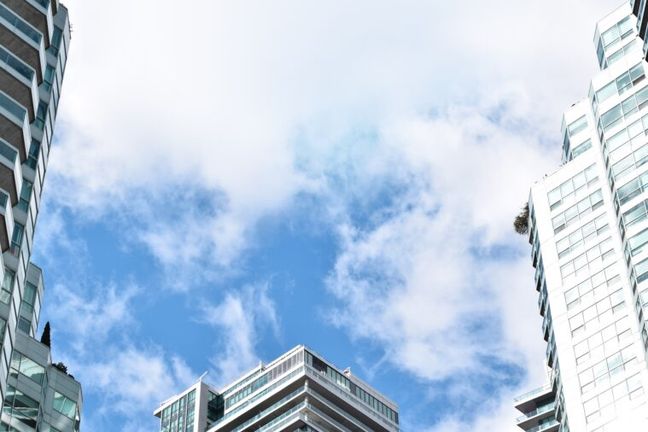The owner and operator of a horse racing track, TP Racing, sought coverage from American Home Assurance Company (“AHAC”) for losses sustained during the pandemic. The district court held the losses were not covered under the applicable policy and granted AHAC’s motion to dismiss for failure to state a claim. The Ninth Circuit affirmed.[i]
Background
TP Racing owns Turf Paradise in Phoenix, as well as a number of off-track betting locations (“OTB”) in bars and restaurants throughout Arizona. TP Racing is insured by AHAC. The policy provides AHAC “will pay for all risks of direct physical loss or damage by a covered cause of loss to covered property at a covered location.”[ii] A “covered cause of loss” was defined by the policy as any “peril or other type of loss … not otherwise excluded.”[iii]
In arguing its losses during the pandemic were covered, TP Racing relied on the following policy provisions:
- The general business interruption provision of the Time Element Coverage specifies AHAC will pay “the actual business income loss sustained by [TP Racing] due to the necessary partial or total interruption of [TP Racing’s] business operations, services or production during the period of indemnity as a result of direct physical loss or damage to … covered property by a covered cause of loss.”[iv]
- The Extra Expense Coverage provision states AHAC will pay “loss sustained by [TP Racing] for extra expense during the period of indemnity resulting from direct physical loss or damage by a covered cause of loss.”[v] The policy defines “extra expense” to mean, among other things, expenses “incurred to temporarily continue as nearly normal as practicable the conduct of [TP Racing’s] business” during the “period of indemnity.”[vi]
- Coverage for an “Interruption by Civil or Military Authority” states AHAC will pay TP Racing for “business income loss” it suffers if (a) someone else’s property “sustains direct physical loss or damage”; (b) an order by some “civil or military authority” limits access to that property; and (c) the effect of this government closure of third-party property is to limit access to TP Racing’s property.[vii]
- Preservation of Property Coverage covers “[r]easonable and necessary costs” incurred by TP Racing in taking action to “temporarily protect or preserve covered property,” but only if TP Racing’s action was “necessary due to imminent direct physical loss or damage to” that property.[viii]
The policy contains as exclusion for contaminants which states that AHAC will not pay for “loss or damage caused directly or indirectly by … [t]he actual, alleged or threatened release, discharge, escape or dispersal of pollutants or contaminants, all whether direct or indirect, proximate or remote or in whole or in part caused by, contributed to or aggravated by any covered cause of loss under this Policy”[ix] (emphasis added). The exclusion defines “pollutants or contaminants” to include “any solid, liquid, gaseous or thermal irritant or contaminant, including smoke, vapor, soot, fumes, acids, alkalis, chemicals and waste, which after its release can cause or threaten damage to human health or human welfare … including, but not limited to, bacteria, virus, or hazardous substances.”[x]
In March of 2020, the governor of Arizona ordered all bars and restaurants closed due to COVID-19, effectively shutting down TP Racing’s OTB locations. The locations were closed until at least until May of 2020. Some closed again from June to August of 2020. The pandemic closures also extended to Turf Paradise, which closed on March 14, 2020 and remained mostly closed until January 4, 2021. TP Racing sought to recover losses stemming from those closures.
To support its claim of coverage, TP Racing relied on the theory COVID-19 virus particles physically present on the surfaces and in the air at TP Racing’s premises, or at a third party’s nearby premises, inflicted “direct physical loss or damage” upon those premises.[xi] The district court rejected TP Racing’s theory and held that, pursuant to Arizona law, coverage was not afforded under the AHAC policy.
The Ruling
The Court of Appeals concluded it was unnecessary to resolve the issue of coverage under the four policy provisions relied upon by TP Racing because coverage was barred by the Contaminant Exclusion. The physical presence of the virus particles TP Racing contends caused the “direct physical loss or damage” triggered the Contaminant Exclusion.[xii]
TP Racing argues the word “dispersal” in the Contaminant Exclusion was ambiguous and should be narrowly construed to mean only contaminants that originate on TP Racing premises, not those which “invade” its premises by way of infected individuals. The Court of Appeals rejected this argument, finding the spread of COVID-19 particles, including from infected individuals, meets the ordinary definition of “dispersal” – i.e., to “strew or distribute widely” or “[t]o distribute (particles) evenly throughout a medium.”[xiii]
According to the appellate court, the exclusion would apply if the claim’s “loss or damage” is caused, directly or indirectly, by any “dispersal” of a virus.[xiv] The plain language of the policy exclusion, the Court of Appeals explained, clearly bars coverage if the claimed “loss or damage” has any causal connection to the dispersal of the virus, “whether direct or indirect, proximate or remote or in whole or in part caused by, contributed to or aggravated by any covered cause of loss under this Policy.”[xv] The Court of Appeals found all of TP Racing’s losses, including prevention and remediation costs, were causally connected to the alleged actual or threatened dispersal of virus particles on its premises or at nearby premises and were therefore not covered.
Takeaway
The applicability of this case to similar cases is limited for a few reasons. First, the decision was not a published in the Federal Reporter. As such, it has no precedential value. Second, the Ninth Circuit chose not to address the district court’s holding that, as a matter of law, the policy did not provide coverage for TP Racing’s Covid-related losses. Instead, the Ninth Circuit affirmed the district court’s granting of AHAC’s motion to dismiss for failure to state a claim upon which relief can be granted due to the Contaminant Exclusion, even though the district court did not rely on that ground. Therefore, the question still remains whether there was COVID-related coverage under the four policy provisions TP Racing relied upon to argue there was applicable coverage.
Keep Reading
More by this author
Sources
[i][i] TP Racing v. American Home Assurance Company, 2023 WL 3750395 (2023).
[ii] Id. at 1.
[iii] [pincite]Id.
[iv] Id.
[v] Id.
[vi] Id.
[vii] Id.
[viii] Id.
[ix] Id.
[x] Id.
[xi] Id.at 2.
[xii] Id.
[xiii] Id. citing Disperse, THE AMERICAN HERITAGE DICTIONARY OF THE ENGLISH LANGUAGE (5th ed. 2018).
[xiv] Id.
[xv] Id. at 3.


 Author: Maria Regina Kupillas
Author: Maria Regina Kupillas
 Editor: Ashley Paige Fetyko
Editor: Ashley Paige Fetyko
 Privacy vs. Relevance: How Deep Can Discovery Go in Colorado Lien Cases?
Privacy vs. Relevance: How Deep Can Discovery Go in Colorado Lien Cases?
 Stale Bread: Workers Accuse Panera of Wage Theft
Stale Bread: Workers Accuse Panera of Wage Theft
 Civil Procedure Updates to Know in New York for 2025
Civil Procedure Updates to Know in New York for 2025
 Collaboration Is Key to Preparation in the Weeks Before Trial
Collaboration Is Key to Preparation in the Weeks Before Trial
 But I Didn’t Mean to Do It …
But I Didn’t Mean to Do It …
 Be Bold, Be Bright, But Be Brief…
Be Bold, Be Bright, But Be Brief…
 Taming the Wolf: Florida’s Fifth DCA Holds the Line on Tort Reform
Taming the Wolf: Florida’s Fifth DCA Holds the Line on Tort Reform
 Power of Persuasion
Power of Persuasion
 Ask Atty: William Johnson
Ask Atty: William Johnson
 I (May) Survive: A Respondeat Superior Claim May Survive Despite Dismissal of a Claim Against an Employee
I (May) Survive: A Respondeat Superior Claim May Survive Despite Dismissal of a Claim Against an Employee
 Arizona Construction Lenders Beware – You Might Not Be Insured Against a Senior Mechanics’ Lien!
Arizona Construction Lenders Beware – You Might Not Be Insured Against a Senior Mechanics’ Lien!
 Arizona Court of Appeals Insulates County from Liability for Deputy Sheriff’s Negligence
Arizona Court of Appeals Insulates County from Liability for Deputy Sheriff’s Negligence
 My Path to Partner: Maria Kupillas
My Path to Partner: Maria Kupillas
 The Ninth Circuit Reminds Us: Every Word Matters
The Ninth Circuit Reminds Us: Every Word Matters
 An Employer Can Benefit from Being the Most Reasonable Person in the Courtroom
An Employer Can Benefit from Being the Most Reasonable Person in the Courtroom
 The Party Who Controls the Narrative Controls the Outcome in Trial
The Party Who Controls the Narrative Controls the Outcome in Trial
 $1.75 M Settlement Ends EEOC Claim
$1.75 M Settlement Ends EEOC Claim